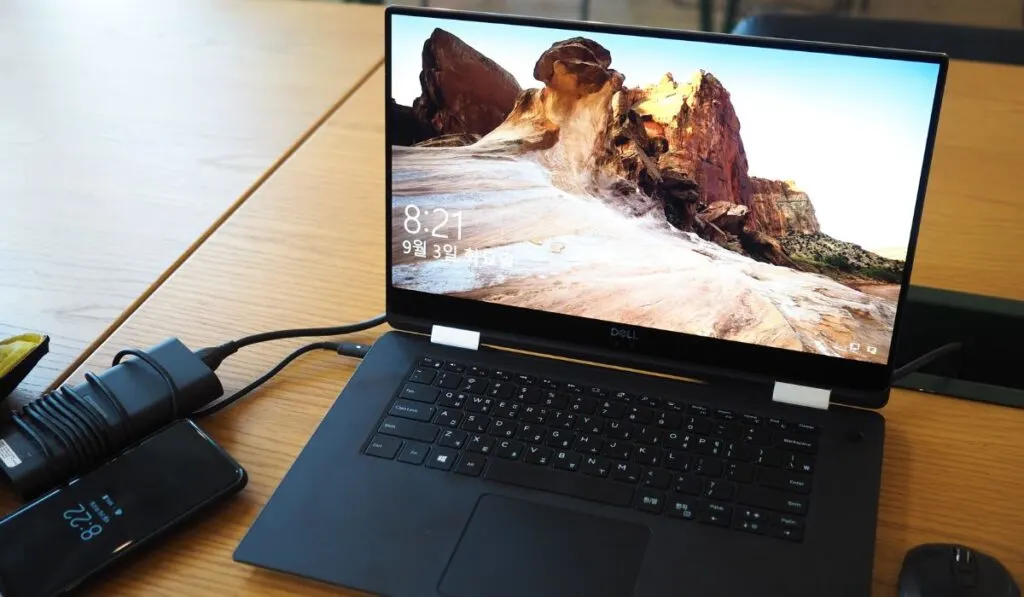Although resetting your Dell laptop should only be done as a last resort, since it involves losing files and settings, it’s important to know how it works. One day, you might choose to sell the laptop — or you might encounter an issue so large that a reset is the only option. Fortunately, the process is fairly easy.
If you have Windows 10, you can reset your Dell laptop by navigating to Start > Reset This PC > Get Started > Removing Everything. On Windows 8, access your settings, press ‘Shut Down’ and the shift key, then choose ‘Restart.’ Login, select ‘Troubleshoot,’ and then choose ‘Dell Backup and Recovery.’
Let’s take a closer look at the steps required to reset a Dell laptop, whether you’re running Windows 10, 8, or something older. We’ll also go through the reasons you might need to reset your laptop and what to do if it doesn’t work.
Why Would You Need to Reset a Dell Laptop?

Although the decision to completely reset your laptop shouldn’t be taken lightly, there are a few situations in which it’s typically necessary to perform a full reset.
Poor Performance
If you’ve been struggling with a slow laptop that keeps crashing or freezing, and no amount of reboots seems to make it any better, then you might want to consider resetting the laptop.
Over its years of use, your laptop may have gathered lots of unnecessary files that are using up the memory. If you don’t need to keep what’s on your laptop, then you can go in and reset it, clearing up the memory and doing away with problematic files. Your laptop should run better afterward.
Viruses or Malware
Although in an ideal world, we would never get any viruses or malware on our laptops, this isn’t always the case. Hackers are getting smarter, and they increasingly plant viruses through innocent-looking emails and hyperlinks in order to steal information. If you have a virus on your computer, it’s critical to get rid of it ASAP.
Although virus scan programs are great, they sometimes can’t get rid of malware. The best way to ensure a virus is dealt with is to reset your computer, completely bringing it back to factory settings. It’s also a good idea to scan it afterward to ensure the virus is definitely gone, as they can be difficult to get rid of for good.
A Fresh Start
You can also reset your laptop simply for a fresh start.
If you’ve changed jobs and need to get rid of all of your old files or you’re just using the laptop for a different purpose now, then resetting it can be a great way to start with a fresh slate. Just make sure to first save any files you may need in the future.
Selling the Laptop
If you’re selling the laptop or even giving it away to a family member, resetting it is ideal. That way, you can make sure all of your personal information is gone and also make the laptop feel brand new to the receiver. This is the safest practice, as there may be stored passwords or financial information you’ve forgotten about.
Recycling the Laptop
If your laptop is at the end of its lifespan and you’re recycling it, it’s best practice to wipe all of your information. Although it will presumably never be turned on again, you can’t guarantee who may access your laptop when it’s out of your hands, and it’s better to be safe than sorry.
How to Reset Your Dell Laptop on Windows 10
If you have Windows 10, you can follow these easy steps to reset your laptop:
- Choose ‘Start.’
- Choose ‘Reset this PC.’
- Choose ‘Get Started.’
- Choose ‘Remove Everything.’
- Follow the on-screen instructions to reset the computer to the level you want (e.g. deleting all files, deleting the account, etc.)
Once you’ve done that, you’ll have to wait a while for the computer to reset itself and boot back up. Please be aware that this is irreversible, and you won’t be able to restore those files or settings later on. Think carefully before you proceed.
How to Reset Your Dell Laptop on Windows 8
On Windows 8, the process is slightly different. You should follow these steps:
- Access your Settings from the charm bar.
- Click ‘Shut Down’ with the shift key pressed and choose ‘Restart.’
- Login and choose ‘Troubleshoot.’
- Choose ‘Dell Backup and Recovery.’
- Follow the prompts to complete the process.
How to Reset Older Dell Models

On older Dell models, you’ll have to start with the laptop switched off. From there, you can follow these steps:
- Tap the F8 key as soon as the system restarts, before the logo appears.
- Choose ‘Repair Your Computer.’ You may be asked to enter your admin password here.
- Choose ‘Dell Factory Image Restore’.
- Follow the instructions on the screen.
What to Do if Your Laptop Won’t Reset
If your laptop won’t reset, there may be a problem with some of the core files. One way to solve this is to run the System File Checker (SFC). Search for Command Prompt on your computer and right-click on the best option to open it as the computer’s administrator. When prompted, enter your password and choose to run the scan.
This should detect any problems within the computer that may be affecting the reset.
If your laptop won’t reset because of something more serious or because you can’t get it to start up at all, then you may need to send it off for professional repair at a computer specialist or with Dell itself. Dell support should be able to help you with your situation, and you can drop off the laptop or mail it in after speaking to the company.
If the computer is still under warranty, the repair should be covered. If not, you will have to pay for the repair yourself.
